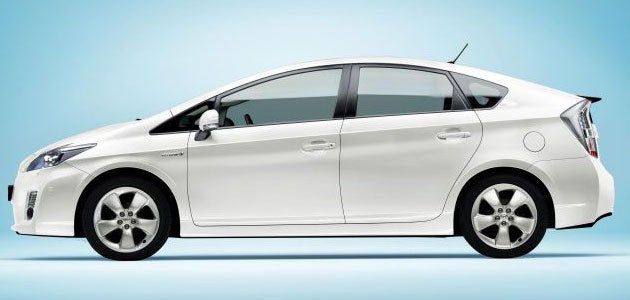New battery can be recharged in seconds

Your support helps us to tell the story
From reproductive rights to climate change to Big Tech, The Independent is on the ground when the story is developing. Whether it's investigating the financials of Elon Musk's pro-Trump PAC or producing our latest documentary, 'The A Word', which shines a light on the American women fighting for reproductive rights, we know how important it is to parse out the facts from the messaging.
At such a critical moment in US history, we need reporters on the ground. Your donation allows us to keep sending journalists to speak to both sides of the story.
The Independent is trusted by Americans across the entire political spectrum. And unlike many other quality news outlets, we choose not to lock Americans out of our reporting and analysis with paywalls. We believe quality journalism should be available to everyone, paid for by those who can afford it.
Your support makes all the difference.Engineers have found a way to make lithium batteries that are smaller, lighter, longer lasting and capable of recharging in seconds.
The researchers believe the quick-charging batteries could open up new applications, including better batteries for electric cars.
And because they use older materials in a new way, the batteries could be available for sale in two to three years, a team from Massachusetts Institute of Technology reported on Wednesday in the journal Nature.
Current rechargeable lithium batteries can store large amounts of energy, making them long-running. But they are stingy about releasing their power, making them discharge energy slowly and require hours to recharge.
Scientists traditionally have blamed slow-moving lithium ions - which carry charge across the battery - for this sluggishness.
However, about five years ago, Gerbrand Ceder and a team at MIT discovered that lithium ions in traditional lithium iron phosphate battery material actually move quite quickly.
"It turned out there were other limitations," Ceder said in a telephone interview.
Ceder and colleagues discovered that lithium ions travel through tunnels accessed from the surface of the material. If a lithium ion at the surface is directly in front of a tunnel entrance, it can quickly deliver a charge. But if the ion is not at the entrance, it cannot easily move there, making it less efficient at delivering a charge.
Ceder and colleagues remedied this by revamping the battery recipe. "We changed the composition of the base material and we changed the way it is made - the heat treatment," Ceder said.
This created many smooth tunnels in the material that allow the ions to slip in and out easily. "The trick was knowing what to change," he said.
Using their new processing technique, the team made a small small battery that could be fully charged in 10 to 20 seconds.
Ceder thinks the material could lead to smaller, lighter batteries because less material is needed for the same result.
And because they simply tinkered with a material already commonly used for batteries, it could be easily adapted for commercial use.
"If manufacturers decide they want to go down this road, they could do this in a few years," Ceder said.
One glitch, Ceder said, would be handling the extra surge of power. "All of the wiring has to get beefed up," he said.
Join our commenting forum
Join thought-provoking conversations, follow other Independent readers and see their replies
Comments